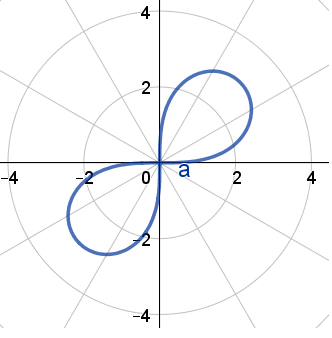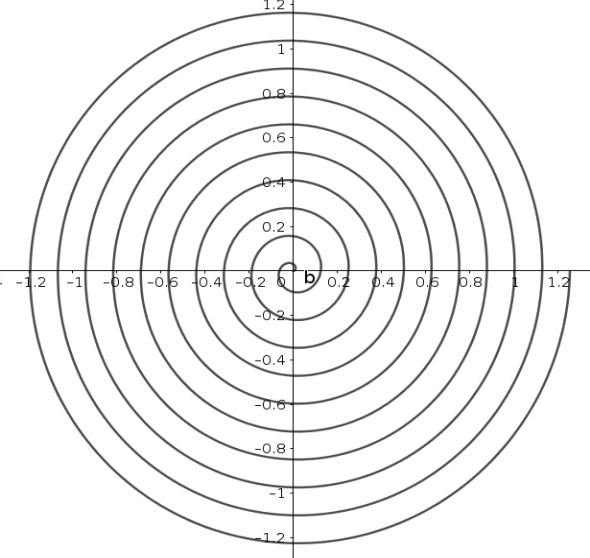Convert Polar to Cartesian
This idea is just to use the definitions to eliminate $r$ and $\theta$ from the equation and replace them with $x$ and $y$. In this case, there are a few standard tricks and, it may not always be possible without some quite involved algebra. $$\mathbf{\text{The definitions:}}$$ $$r^2 = x^2+y^2$$ $$\tan\theta=\frac{y}{x}$$ $$x=r\cos\theta$$ $$y=r\sin\theta$$
Answer: The first “trick” to learn is that squaring both sides of the equation in order to get $r^{2}$ will permit the substitution, $r^{2}=x^{2}+y^{2}$. So, $r^{2}=16$ $$x^2+y^2=16$$
Answer: >Use the definition of cosecant and secant to get the equation into sin and cosine. $$\cos=\frac{adj}{hyp}\qquad\sec=\frac{hyp}{adj}=\frac{r}{r\cos\theta}$$ $$\sin=\frac{opp}{hyp}\qquad\csc=\frac{hyp}{opp}=\frac{r}{r\sin\theta}$$ Now substitute these definitions into the equation. $$r=\frac{4}{\frac{r}{r\sin\theta}}+\frac{3}{\frac{r}{r\sin\theta}}$$ Simplify $$r=\frac{4r\sin\theta}{r}+\frac{3r\cos\theta}{r}=4\sin\theta+3\cos\theta$$ Use our only trick. Multiply both sides by $r$. $$r^{2}=4r\sin\theta+3r\cos\theta$$ Use the definitions to make substitutions: $$x^{2}+y^{2}=4y+3x$$ Technically, we could stop here. However, we could also complete the square in both $x$ and $y$ to learn more about the graph.
First, rearrange the terms: $$x^{2}-3x+y^{2}-4y=0$$ Now complete the square in the $x$ terms and complete the square in the $y$ terms: $$(x-\frac{3}{2})^{2}-\frac{9}{4}+(y-2)^{2}-4=0$$ Relocate the constant terms: $$\left(x-\frac{3}{2}\right)^{2}+(y-2)^{2}=6.25$$ So we learned that when graphed, the equation will be a circle with center $(3/2,2)$ and radius $5/2$.
Convert a Polar Equation to Parametric Equations
This is almost an afterthought, but it is worth stating. Suppose we have a polar equation such as a nice multi-leaf clover or other artistic equation. Many of these are given as $$r(\theta)=function(\theta) \tag{EQ1} \label{EQ1}.$$
Also, let's suppose that our CAS machine doesn't have a polar graphing mode - or more likely that we do not choose to learn how to use it. The polar equation can be easily parametrized to get the familiar two part equation.
Step 1: Multiply equation $\eqref{EQ1}$ by $\cos\theta$ on both sides.
Step 2: Multiply equation $\eqref{EQ1}$ by $\sin\theta$ on both sides.
This will give $$r(\theta)\cdot \cos\theta=function(\theta)\cdot \cos\theta$$
$$r(\theta)\cdot \sin\theta=function(\theta)\cdot \sin\theta$$
These two equations contain the definition of $x$ and $y$ on the left side. Consequently, they can be graphed as parametric equations switching to the usual parameter $t$ in place of $\theta$. Most of the time, for artistic equations we will iterate $t$ from $0$ to $2\pi$.
$$x(t)=function(t)\cdot \cos(t)$$
$$y(t)=function(t)\cdot \sin(t)$$

